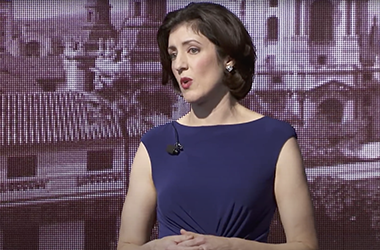Why I Hate the Mom Salary Survey

 This past week leading up to Mother’s Day, Salary.com published its 10th Annual Mom Salary Survey which calculates that Stay-at-Home Moms Would Earn US$117,856 if paid for her family work. Employed mothers, the survey says, would earn US$71,860 above their regular salary for their mom duties – less because they pay for some childcare.
This past week leading up to Mother’s Day, Salary.com published its 10th Annual Mom Salary Survey which calculates that Stay-at-Home Moms Would Earn US$117,856 if paid for her family work. Employed mothers, the survey says, would earn US$71,860 above their regular salary for their mom duties – less because they pay for some childcare.
I hope the 10th Annual Survey is the last.
These calculations always sound inflated and as a result, end up trivializing the very real importance of assigning economic value to caregiving work – no matter who is doing it. Plus, they reinforce an outdated assumption that mothers are – or should be the only ones doing this family work.
Salary.com’ s calculations use typical salaries for specialists, such as psychologist, cook, and chief executive officer, to value the hours a mother spends doing similar activities. For example, one hour as a psychologist is worth $38.84, one hour as a cook is worth $14.26, and one hour as a CEO is worth $72.32. These types of salary figures seem too high because you’d never hire a whole team of specialists to do the work a mother (or father) does. We know that, if we wanted or had to, replacing some or all of the family work done by a mother or father wouldn’t cost that much. So those numbers may give us an ego boost, but they aren’t very useful for thinking about the value of family work.
We’d be better off thinking about the replacement value of the work like a life insurance policy would do. If a parent no longer provided care for the children and family, what would the family need to pay to provide replacement care of similar quality? Nancy Folbre, economist and author of Valuing Children, calculates that a conservative estimate of the cost of replacing the time the parents spend caring for children (not including housework) is between $13,000 and $23,000 per year for a two-parent, two-child family.
So now take that to that to the next level. Folbre asks, “If parents were unwilling or unable to provide care to their children, what would society need to pay to provide substitute care of acceptable quality?” Well, at $13,000 per year per child for the time spent on childcare alone and nearly seventy-four million children in the United States in 2006, that’s well over a trillion dollars. In fact, the organization Redefining Progress estimates that the value of parenting plus housework in the United States in 2004 was about $2.5 trillion— equal to about a third of the gross domestic product (GDP). This enormous amount of work is invisible, even though every day it adds economic value in so many ways – by allowing for others to participate in the paid workforce and in the long-term by developing the human capital our society depends upon.
So can we please stop focusing on this as a “mom” issue? As if fathers don’t provide any care and are completely irrelevant? And when we do need to talk about mothers specifically can we stop using the baggage-laden terms “Stay at Home Mom” and “Working Mother” and replace them with employed mother and mother (or parent) who is not employed – so that we are clear that both unpaid and paid work have value?
Let’s instead focus on imagining a world where everyone truly believed that Caring for others is a vital human and economic activity and a public service and what it would take to get there. What do you think would be different in that world?

For more on this topic read Chapter 5 of my book This is Not How I Thought It Would Be: Remodeling Motherhood to Get the Lives We Want Today which is titled “Baby Vacations: What Did I Do All Day?”
and my blog post Nancy Folbre, economist and author of Valuing Children



Wonderful article-thank you so much for reframing so many of these assumptions surrounding “working moms” and the gender stereotypes surrounding motherhood. How refreshing!
We all have to keep fighting those stereotypes every day so that when our own children are grown they won’t have to deal with them! Kristin
Although I understand your larger point, an analysis of this type – putting an approximate dollar figure on particular roles generally filled (still) by women – is needed.
Not enough Americans have even given a thought to how the tasks completed by women as mothers would be done if some or all of those tasks were outsourced. Education has only just begun.
I am a community & regional economic development specialist and it’s important that communities account for, plan for and do all they can to help provide a depth of economic development so family services are available. If we don’t analyze and consider what resources it takes to fill the primary child caretaker role (be it a man, woman or combo of the two) then our communities won’t have those professionals in business and families won’t have the available services needed.
Lastly, when parents are purchasing life insurance they should include what it would cost for the surviving parent to hire assistance with operating the house, caring for the kids, etc. For those who haven’t considered having sufficient life insurance to accurately fill in the gap of care that a parent provides this yearly study can be a helpful place to start. If either my husband or I pass away we would have zero free assistance from family, friends or neighbors – whoever survives would have to hire out.
Perhaps the analysis could be more gender neutral but in general our nation and society still need analyses like these.